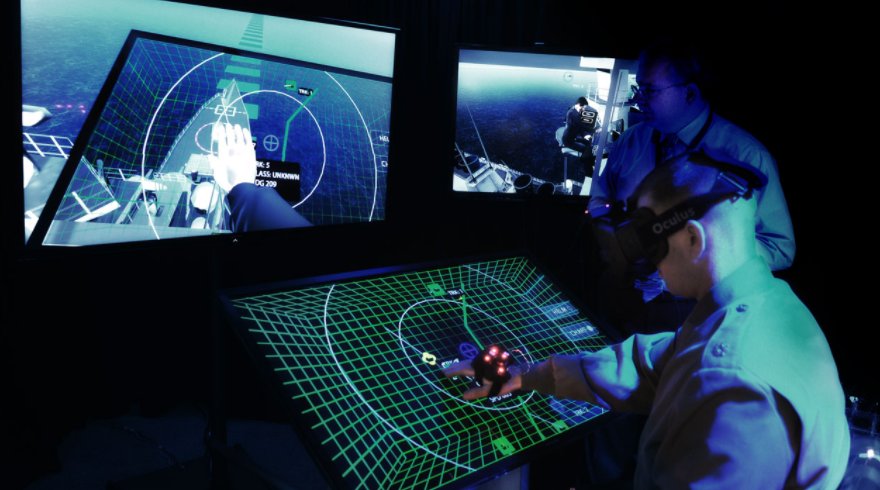Psychological Warfare - The Power of Information (Operations)

Nye suggests that informational power will grow in influence in the twenty first century (Nye, 1990, loc 601). Online social media and global Internet access make informational power even more potent. Nye also suggests that information can shape international institutions to increase soft power (Gomichon, 2013). The U.S. utilizes informational power through both Strategic Communication (SC) and Information Operations (IO), although all U.S. actions (or inaction) may have substantial information components.
SC in the U.S. is the strategic use of information “…to shape political, economic, military and cultural forces…” (US Army, 2011, 11), through the functions of Public Affairs (PA), military IO, and Public Diplomacy (PD). The U.S. Government SC audience can be friendly, neutral and adversarial. With military IO, the audience is primarily viewed as adversarial (US Army, 2011, 15). The complex structure of the U.S. Government can make coordinated SC messaging challenging. Winfield Scott effectively used theater level SC in Veracruz (1847) – by attended Catholic Mass, and having soldiers salute Mexican priests, in order to win popular support (US Army, 2011, 12).
Forest suggests that governments and terrorists are in battle for SC, referencing Secretary of Defense Gates on the power of “…shaping behavior of friends, adversaries, and most importantly, the people in between” (Forest, 2013, Loc 4445). Terrorist organizations have been particularly adept at leveraging new media. Military IO supports SC through “…information related capabilities in concert with other lines of operation to influence, disrupt, corrupt, or usurp the decision making of adversaries and potential adversaries while protecting our own." (US Army, 2011, 5). IO functions integrate with other functions, rather than own capabilities.

The five pillars of military IO include both content and Information Systems (IS) capabilities. Pillars with primarily content capabilities include Psychological Operations (PSYOP – “black” or “white” propaganda), Military Deception (MILDEC – deceiving the enemy), and Operations Security (OPSEC – keeping operations secret). IO Pillars with primarily IS capabilities include Electronic Warfare (EW – detection, interception, and denying electronic signals), and Computer Network Operations (CNO – operations, defense and attack of computer systems/networks) (Paul, 2008,1118). Paul notes that OPSEC should be every group’s responsibility, not just the IO function. Paul also suggests that high intensity conflicts rely more on IS capabilities, whereas low intensity conflicts rely more on content capabilities (Paul, 2008, 46). It is very possible for these functions to conflict with one another, as when EW is denying a frequency band being used for PSYOP messages. Paul further notes that PSYOP content can be deceptive (“Black” – generally illegal for the U.S.) or correctly attributed (“White”). “Black” information can severely damage credibility.
WWII Operation Fortitude is a classic example of primarily MILDEC, but integrating multiple pillars of IO. The German military was deceived as to the invasion target through very effective secrecy of the actual target (OPSEC), and false force movements radio communications, false naval and air forces through physical decoys and radar images (EW). Leaflets with PSYOP messages were dropped in WWII, and both Korean/Vietnam conflicts (Paul, 2008, 1214). The STUXNET malware is an example of a very successful CNO operation (though probably not a military operation). Defending against C3 system attack is a significant CNO function.
Paul notes three dimensions of the information environment: physical, informational, and cognitive (Paul, 2008, 26). A number of influence mechanisms operate in the cognitive dimension – such as short cut responses (judgmental heuristics), expert opinions, extreme contrasts, and deferring to higher authorities (Cialdini, 2009). Radical Islamists use religious authorities to promote extreme propaganda (PSYOP). Time is an aspect of the physical environment. Leonard notes challenges with real time media, and embedding media with military operations – leading to misinterpretations, and to giving away force positions (Leonard, 2000, 24). Responding to real time “Black” propaganda can also be problematic. Image editing capabilities may increase “Black” propaganda activity.
References:
Cialdini, Robert (2009). Influence: Science and Practice. Boston: Pearson. p. 117.
Forest, James J. F. and Honkus III, Frank (2013). Influence Warfare: How Terrorists and Governments Fight to Shape Perceptions in a War of Ideas. Edited by James Forest. Westport, Conn.: Praeger, Kindle edition, location 203525.
Gomichon, Maxime (2013). Joseph Nye on Soft Power. eInternational Relations.
Leonhard, Robert (2000). The Principles of War for the Information Age. Novato, Calif.: Novato Press. P. 334.
Nye, Joeph (1990). Bound to Lead: The Changing Nature of American Power. New York: Basic Books, Kindle edition.
Paul, Christopher (2008). Information Operations: Doctrine and Practice. Westport, CT: Praeger. p. 156.
U.S. Army (2011). Information Operations Primer: Fundamentals of Information Operations. P. 132.
Thanks for sharing.
Very welcome. Please continue to check out some of my other posts and articles which cover a diversity of topics related to politics, history and environmental issues
Another good one. I upvoted this on Steemfollower, but it gave me following error : "Error( 4 ) in adding Point! But Upvoted! Please Report!". You may want to look into this. I am REALLY enjoying your writing on this specific topic. Keep it up...
I was having some issues yesterday even logging in to the platform. Hopefully they have been resolved, and any votes and resteems are working as intended. Thanks for reading and following my posts.
Upvoted! Your posts are always interesting and thoroughly sourced, look forward to your next offering.
Thank you. Please continue to follow my future posts as I will be expanding to cover more esoteric topics, especially in relation to history and politics.